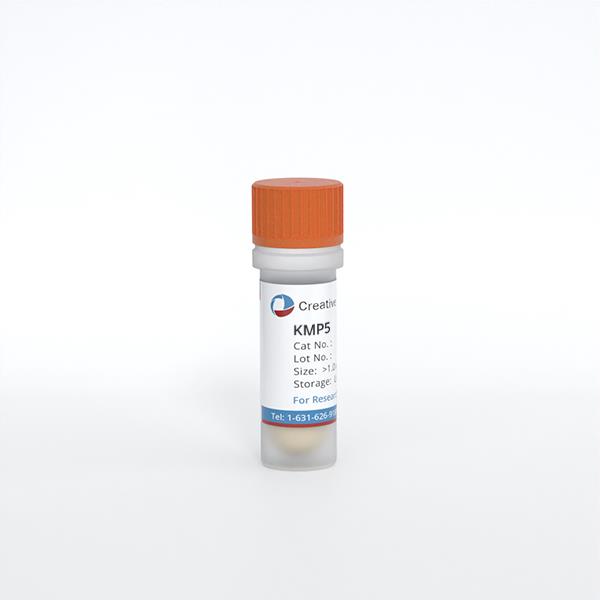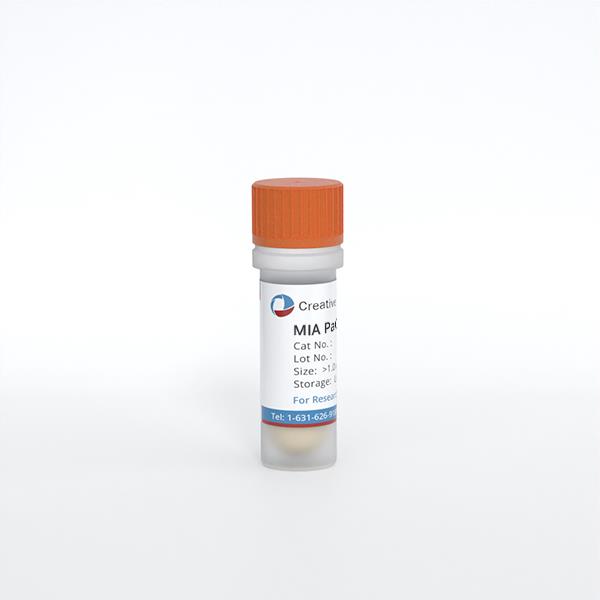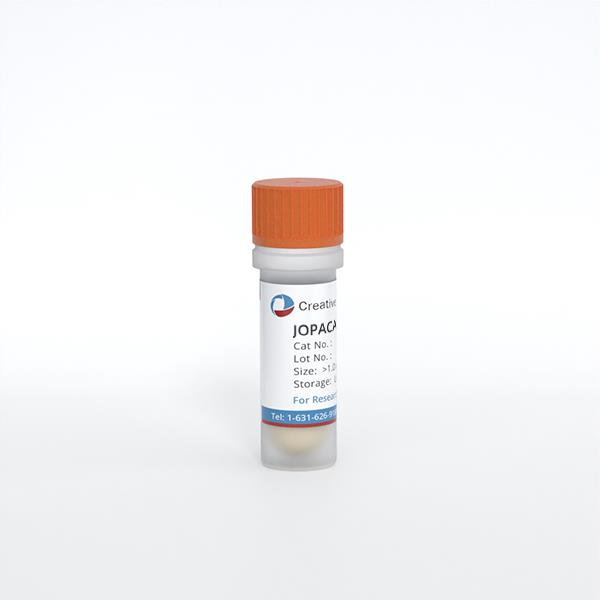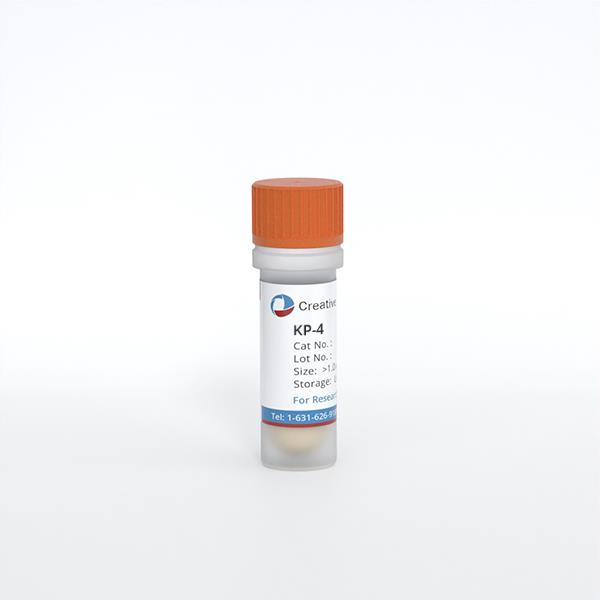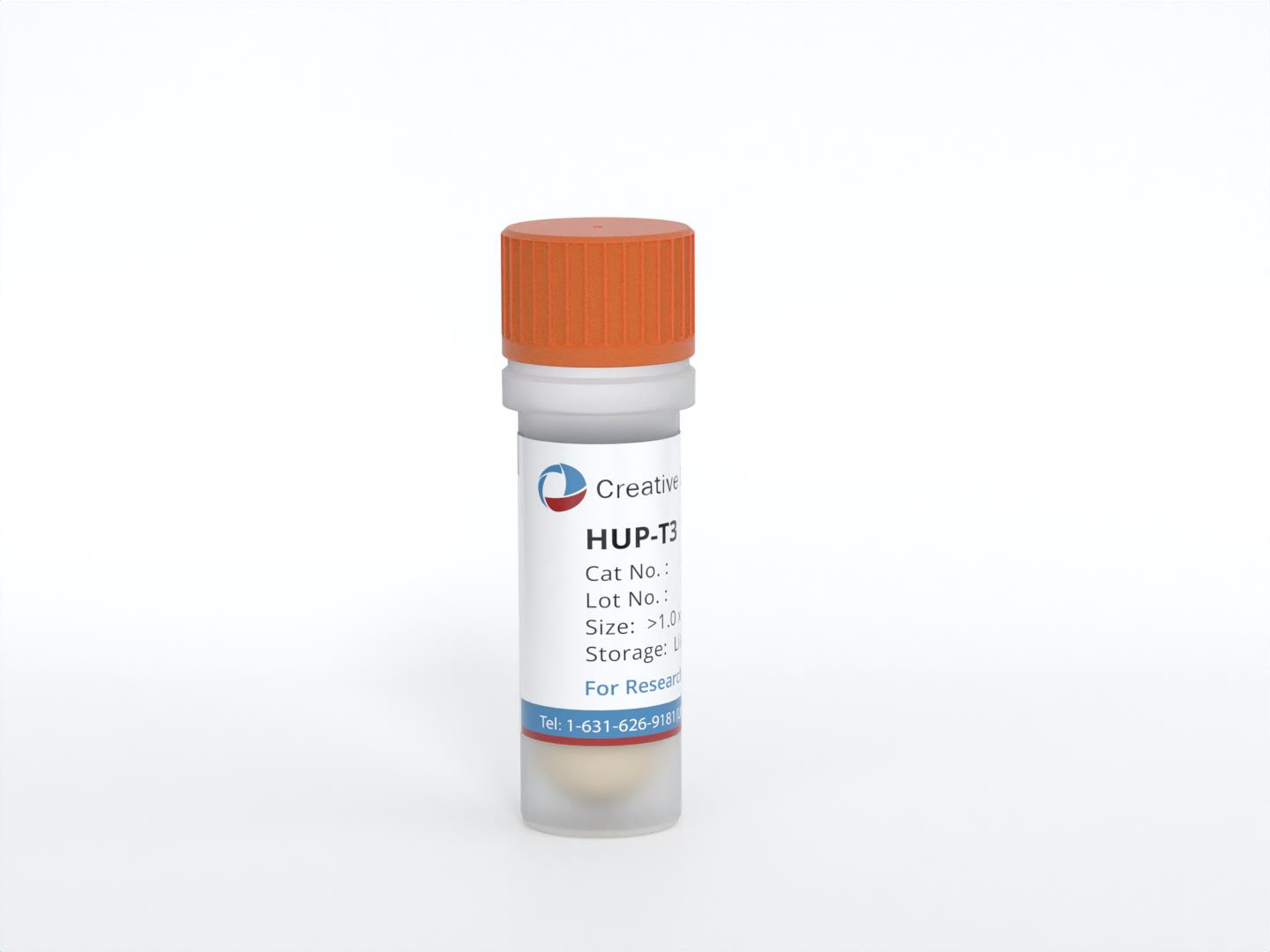
HUP-T3
Cat.No.: CSC-C0359
Species: Homo sapiens (Human)
Source: Ascites Metastasis
Morphology: epitheloid cells growing adherently in monolayers and clusters
Culture Properties: monolayer
- Specification
- Q & A
- Customer Review
Cat.No.
CSC-C0359
Description
Established from the malignant ascites of a 66-year-old Japanese man with pancreas carcinoma in 1984
Species
Homo sapiens (Human)
Source
Ascites Metastasis
Culture Properties
monolayer
Morphology
epitheloid cells growing adherently in monolayers and clusters
Karyotype
Human flat-moded hypodiploid karyotype with 13% polyploidy - 39(36-40)<2n>XY, -6, -8, -9, -10, -12, -13, -17, -17, -19, -20, +3mar (2 rings), del(4)(p15), add(11)(q22.3;HSR), add(12)(q24;HSR), add(19)(p13), add(21)(p12) - gene amplification suggested by l
Disease
Pancreatic Adenocarcinoma
Quality Control
Mycoplasma: negative in DAPI, microbiological culture, RNA hybridization assays
Immunology: cytokeratin +, cytokeratin-7 (+), cytokeratin-8 +, cytokeratin-17 -, cytokeratin-18 +, cytokeratin-19 +, desmin -, endothel -, EpCAM +, GFAP -, neurofilament -, v
Immunology: cytokeratin +, cytokeratin-7 (+), cytokeratin-8 +, cytokeratin-17 -, cytokeratin-18 +, cytokeratin-19 +, desmin -, endothel -, EpCAM +, GFAP -, neurofilament -, v
Storage and Shipping
Frozen with 70% medium, 20% FBS, 10% DMSO at about 1.5 x 10^6 cells/ampoule; ship in dry ice; store in liquid nitrogen
Synonyms
HuP-T3; Hu-P-T3; HuPT3; HupT3; HUPT3
Citation Guidance
If you use this products in your scientific publication, it should be cited in the publication as: Creative Bioarray cat no.
If your paper has been published, please click here
to submit the PubMed ID of your paper to get a coupon.
Ask a Question
Write your own review
- You May Also Need
Related Products
Featured Products
- Adipose Tissue-Derived Stem Cells
- Human Neurons
- Mouse Probe
- Whole Chromosome Painting Probes
- Hepatic Cells
- Renal Cells
- In Vitro ADME Kits
- Tissue Microarray
- Tissue Blocks
- Tissue Sections
- FFPE Cell Pellet
- Probe
- Centromere Probes
- Telomere Probes
- Satellite Enumeration Probes
- Subtelomere Specific Probes
- Bacterial Probes
- ISH/FISH Probes
- Exosome Isolation Kit
- Human Adult Stem Cells
- Mouse Stem Cells
- iPSCs
- Mouse Embryonic Stem Cells
- iPSC Differentiation Kits
- Mesenchymal Stem Cells
- Immortalized Human Cells
- Immortalized Murine Cells
- Cell Immortalization Kit
- Adipose Cells
- Cardiac Cells
- Dermal Cells
- Epidermal Cells
- Peripheral Blood Mononuclear Cells
- Umbilical Cord Cells
- Monkey Primary Cells
- Mouse Primary Cells
- Breast Tumor Cells
- Colorectal Tumor Cells
- Esophageal Tumor Cells
- Lung Tumor Cells
- Leukemia/Lymphoma/Myeloma Cells
- Ovarian Tumor Cells
- Pancreatic Tumor Cells
- Mouse Tumor Cells
Hot Products
